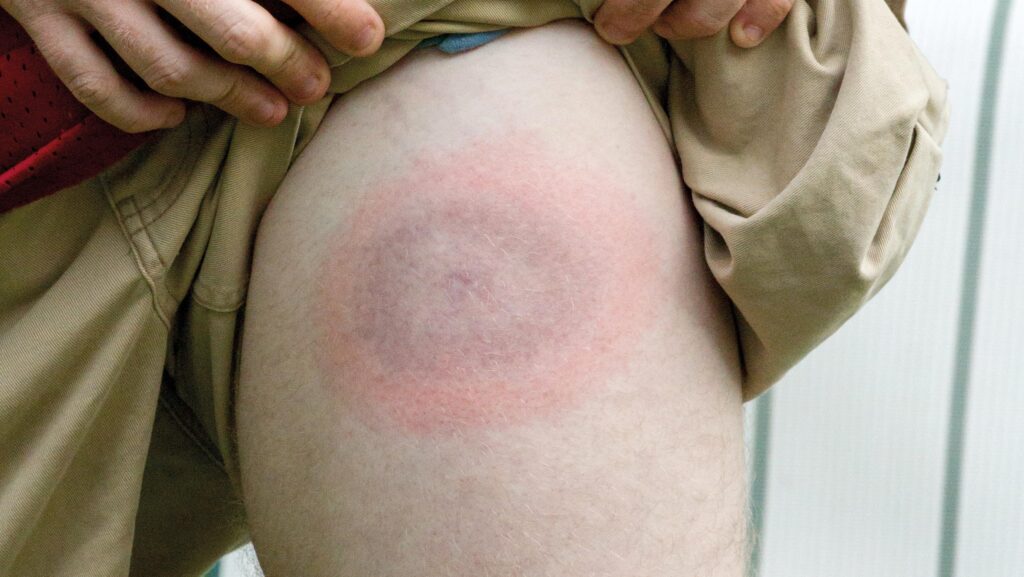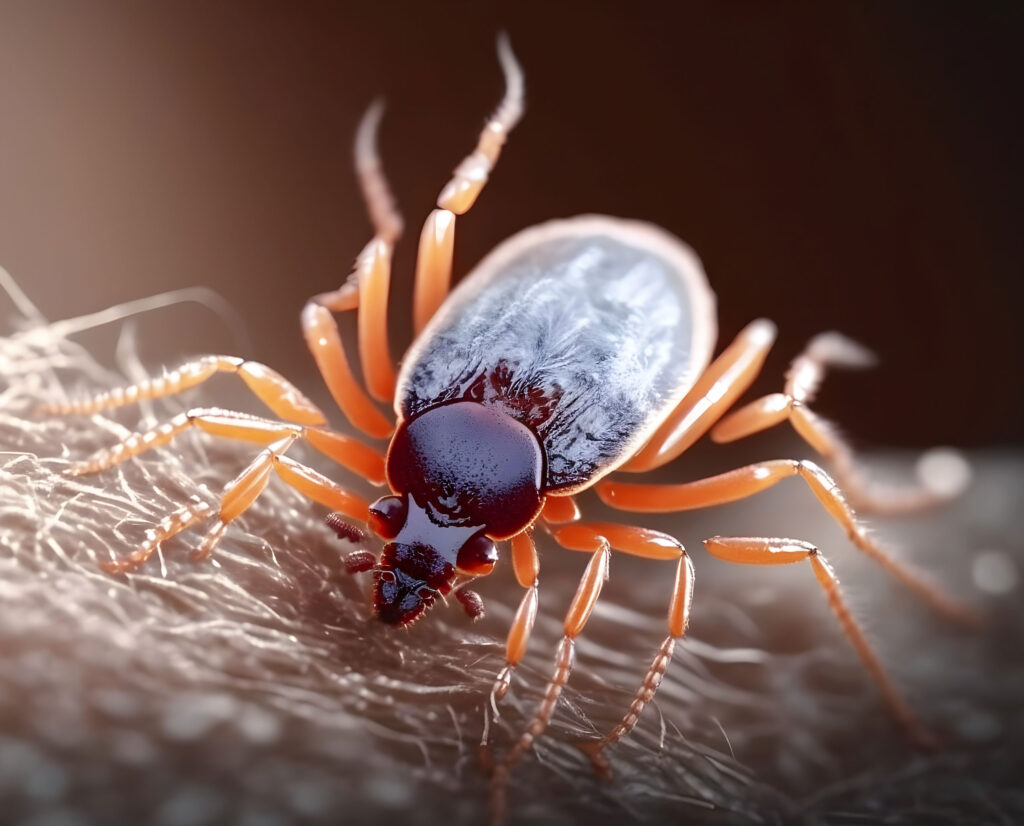Farm Doctor: On the lookout for ticks and Lyme disease
 © Adobe Stock
© Adobe Stock The risk of contracting Lyme disease is potentially higher for people who work in the countryside because it is spread by infected ticks that can lurk in wooded, marshy or grassy areas.
There are thousands of confirmed cases of this bacterial infection in Britain every year, with the south of England and the Scottish Highlands identified as high-risk areas.
But farmer’s daughter and doctor Camilla Baker says infected ticks can be found anywhere in the UK.
In this month’s Farm Doctor, she gives advice on how to avoid infection and what to do if symptoms appear.
See also: What to do if you suffer from hearing loss
How Lyme disease occurs
Ticks feed on the blood of people and animals and, while most are harmless, some carry the bacteria, borrelia, which causes Lyme disease.
These parasites are at their most active from spring through to autumn, but can also be found when the temperatures are cooler.
The larvae are as small as a freckle, but when a female is fully fed, she can be the size of a baked bean.
Ticks favour moist habitats with leaves, long grass, heather and moorland.

Dr Camilla Baker © Camilla Baker
What are the signs and symptoms?
Early recognition and treatment of Lyme disease can reduce the risk of long-term effects.
The first and most common symptom is a rash, which typically appears between one and four weeks after a bite, but as much as three months later and usually at the site of the bite. But it can appear elsewhere.
This rash sometimes looks like a bullseye, starting as a red and circular rash and gradually increasing in size with perhaps a paler ring on the inside, and is not normally painful or itchy.
But some people may not develop a rash or not notice it.
Around one-third of people also develop flu-like symptoms, such as tiredness, high temperature and general aches and pains although, as Camilla points out, these symptoms are common and may have other causes.
Other symptoms that occur later and may indicate infection include joint swelling and pain, nerve problems including numbness or problems with the eyes, difficulty with memory and concentration, and heart problems.
These symptoms are also associated with other medical problems and therefore make Lyme disease hard to diagnose.
Investigations, diagnosis and management
Reassuringly, Lyme disease can be treated with antibiotics and most people make a complete recovery.
Anyone who notices a bullseye rash or suspects they may have been bitten by a tick should contact their GP or health professional for a review.
If infection is suspected, a course of antibiotics will be prescribed, typically for 21 days.
Camilla says it is important to finish the course, even if you are feeling better.

© AdobeStock/Adin
“During the antibiotics course, as the bacteria are being killed, some people develop fevers and chills and feel more unwell, but it is usually self-limiting and resolves in a day or two,” she says.
Others continue to experience the symptoms and may need a second course of antibiotics, she adds.
In cases when someone doesn’t develop a rash, but suspects they may have Lyme disease, their GP may perform tests to look for antibodies.
As with many tests, there is a possibility that it will produce a negative result, known as a “false negative”, even when there is infection, which sometimes happens when the testing is done too early; testing can also produce a false positive.
“Your GP may perform further tests or seek specialist advice,” says Camilla.
“If there is a high suspicion of infection, your doctor will prescribe antibiotics while waiting for the results.’’
Prevention
Avoiding situations where tick bites can occur is the best way to prevent infection, but this is easier said than done in agriculture.
Clothing can be an effective barrier to infection – wear long-sleeve shirts and long trousers that are tight at the ankle, or tuck trousers into socks is the advice.
Wearing light-coloured clothing will make ticks easier to spot and, as a consequence, brush off. Repellents may also help.
Camilla advises regularly checking for ticks, including before you go into your home.
Bites can be present on any part of the body, but are more frequently found on legs and, for children, on their head or neck.
It is also wise to check pets for ticks.
Removing ticks
If a tick is spotted, it is important to remove it quickly and safely. Camilla recommends using a pair of tweezers or a tick removal tool.
“Grab the tick as close to the skin as possible and pull firmly upwards,” she says.
“If the head is left in the skin, infection may still occur.”
After removal, wash the area with soap and water and keep it clean.
If a bullseye rash appears, call NHS 111 or book a GP appointment.
Tick bites – more than just an occupational hazard
Scottish farmer and forester Stuart Munro fears successive tick bites may have left him with the chronic symptoms of Lyme disease.
Stuart farms beef, sheep and arable at Peterhead, Aberdeenshire, and also runs a forestry contracting business.
He always saw tick bites as a hazard of his job.
But what he hadn’t understood was some of those parasites are likely to have been carriers of Lyme disease, because for several years he has been living with fatigue, stiff knees and general flu-like symptoms.
After a bad flare-up in August 2024, he pleaded with his GP to be tested for Lyme disease.
“Everything had been pointing to Lyme disease, but the doctor hadn’t tested for it until I asked for it,” says Stuart.
He tested positive for the disease and was prescribed a three-week course of antibiotics, but it did little to alleviate his symptoms, so was followed by another course.
He is still living with the symptoms and, despite being just 34, feels much older than his years.
“I feel like I am losing the best years of my life,” he admits.
“There are days when I get really bad brain fog too – I find myself wandering about and unable to make decisions.”
Stuart’s advice to other farmers is to routinely check for ticks.
“Do that at the end of every day.
“Anyone can get bitten and it’s important to get treated as quickly as possible when you do.”
